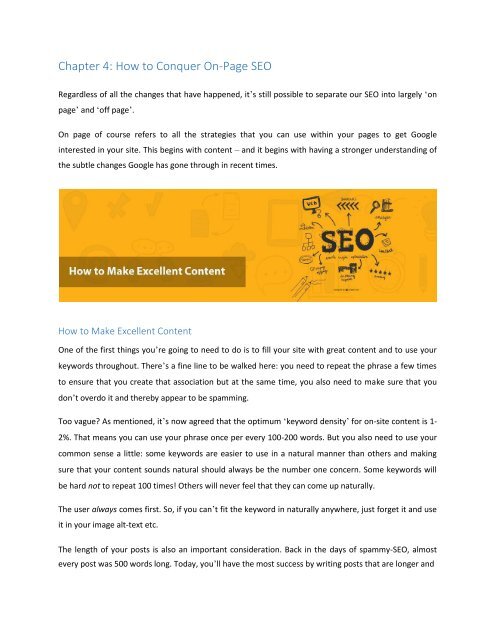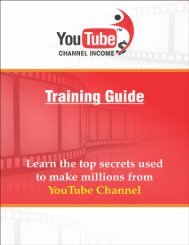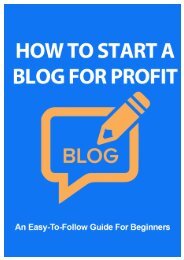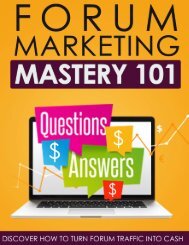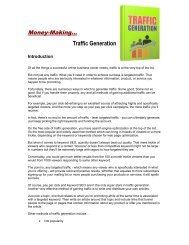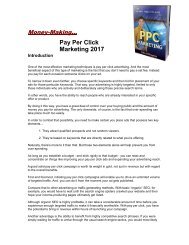The New Guide to SEO
If you want to get the maximum amount of profit from a website, then you need to get as much traffic as you can. If you want to get the maximum amount of traffic to your website, then you need to get to the top of Google. And if you want to get to the top of Google, then you need SEO or ‘Search Engine Optimization’. Search Engine Optimization is the process of optimizing a website so that Google will be more likely to index it and ensure that it ranks highly for the most relevant key words and phrases. For example, if you have a website the sells hats, then you might try to get it to rank for the phrase ‘buy hats online’. To do this, you would go through an optimization process that would involve both ‘on site’ and ‘off site’ strategies.
If you want to get the maximum amount of profit from a website, then you need to get as much traffic as you can. If you want to get the maximum amount of traffic to your website, then you need to get to the top of Google.
And if you want to get to the top of Google, then you need SEO or ‘Search Engine Optimization’. Search
Engine Optimization is the process of optimizing a website so that Google will be more likely to index it and ensure that it ranks highly for the most relevant key words and phrases. For example, if you have a website the sells hats, then you might try to get it to rank for the phrase ‘buy hats online’. To do this, you would go through an optimization process that would involve both ‘on site’ and ‘off site’ strategies.
Create successful ePaper yourself
Turn your PDF publications into a flip-book with our unique Google optimized e-Paper software.
Chapter 4: How <strong>to</strong> Conquer On-Page <strong>SEO</strong><br />
Regardless of all the changes that have happened, it’s still possible <strong>to</strong> separate our <strong>SEO</strong> in<strong>to</strong> largely ‘on<br />
page’ and ‘off page’.<br />
On page of course refers <strong>to</strong> all the strategies that you can use within your pages <strong>to</strong> get Google<br />
interested in your site. This begins with content – and it begins with having a stronger understanding of<br />
the subtle changes Google has gone through in recent times.<br />
How <strong>to</strong> Make Excellent Content<br />
One of the first things you’re going <strong>to</strong> need <strong>to</strong> do is <strong>to</strong> fill your site with great content and <strong>to</strong> use your<br />
keywords throughout. <strong>The</strong>re’s a fine line <strong>to</strong> be walked here: you need <strong>to</strong> repeat the phrase a few times<br />
<strong>to</strong> ensure that you create that association but at the same time, you also need <strong>to</strong> make sure that you<br />
don’t overdo it and thereby appear <strong>to</strong> be spamming.<br />
Too vague? As mentioned, it’s now agreed that the optimum ‘keyword density’ for on-site content is 1-<br />
2%. That means you can use your phrase once per every 100-200 words. But you also need <strong>to</strong> use your<br />
common sense a little: some keywords are easier <strong>to</strong> use in a natural manner than others and making<br />
sure that your content sounds natural should always be the number one concern. Some keywords will<br />
be hard not <strong>to</strong> repeat 100 times! Others will never feel that they can come up naturally.<br />
<strong>The</strong> user always comes first. So, if you can’t fit the keyword in naturally anywhere, just forget it and use<br />
it in your image alt-text etc.<br />
<strong>The</strong> length of your posts is also an important consideration. Back in the days of spammy-<strong>SEO</strong>, almost<br />
every post was 500 words long. Today, you’ll have the most success by writing posts that are longer and


